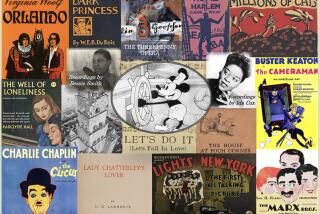Archaic Patent Laws Need to Be Rewritten
- Share via
Even Rube Goldberg couldn’t have invented anything as confused and perverse as America’s patent and intellectual property protection system.
But where Goldberg was famous for crafting machines of ridiculous complexity, our intellectual property regimes have been crafted to be ridiculously simplistic: One size fits all.
At a time when people increasingly recognize that intellectual property--the mind-stuff of computer software, silicon chip design and bioengineered molecules--is vital to innovation and economic prosperity, there is no thoughtful intellectual property policy to be found. Instead, what we have are litigious lawyers waging policy through both case law and through the absurdly archaic machinations of the Patent and Trademark Office.
Just how archaic? Ever wonder why patents are awarded for 17 years--and not seven or 12 or 21? Don’t expect any logic.
“It was purely arbitrary,” says Judge Giles Rich, who serves on Washington’s Court of Appeals of the Federal Circuit and is a preeminent legal scholar on intellectual property. Patent protection, he notes, “was the first piece of legislation passed after the Constitution. . . . George Washington signed it into law in 1790.”
At that time, an apprenticeship lasted seven years. So the first Congress decided to offer patent protection for the length of two apprenticeships. Some representatives wanted to allow the option to renew patents for another seven years. Instead, Congress decided to “split the difference,” says Judge Rich, and offer a single term of 17 years.
And that’s the way it’s been for more than two centuries. At a time when many industries measure product cycles in months, not years--does the 17-year term even make sense any more? Is it good public policy to grant a life-saving drug that took a decade to create the same amount of intellectual property protection that a custom-designed computer chip has? Should the Patent and Trademark Office be unilaterally able to reshape the software industry by granting patents to programs that had traditionally been protected by copyright law?
“We do have one size fits all because it’s supposed to be elegant,” says Brian Kahin, director of the Information Infrastructure Project at Harvard University. “It’s also a matter of expediency--lawmakers do not want to be troubled with continually revisiting what the length of protection should be in a particular industry.”
But Kahin points out that there have been discussions in legal circles about “modified patents” in the fast-moving computer chip and software domains that offer protection for up to five years. Indeed, he asserts, the Patent and Trademark Office has hurled the software industry into confusion by deciding to grant software patents.
In the opinion of many software designers and patent attorneys, the Patent and Trademark Office has granted several overly broad patents--the digital equivalent of the wheel. The holders of these software patents have used them to legally bludgeon firms into paying licenses or significantly modifying their programs. Instead of spurring innovation and investment, software patents are creating a litigious mess.
The real issue here isn’t the granting of patents to spreadsheets and databases; it’s what kind of intellectual property regimes make sense in this day and age. By offering 17 year de jure monopolies, our existing policy creates a disincentive for rapid innovation in growing fields. It’s time to start re-asking the basic questions about what kind of investment and innovation we want our intellectual property policies to encourage. To try to shoehorn the explosiveness of software and biotechnology invention into protection schemes more appropriate to Paul Revere’s time is the sign of policy makers who neither understand the past nor anticipate the future.
More to Read
Inside the business of entertainment
The Wide Shot brings you news, analysis and insights on everything from streaming wars to production — and what it all means for the future.
You may occasionally receive promotional content from the Los Angeles Times.










